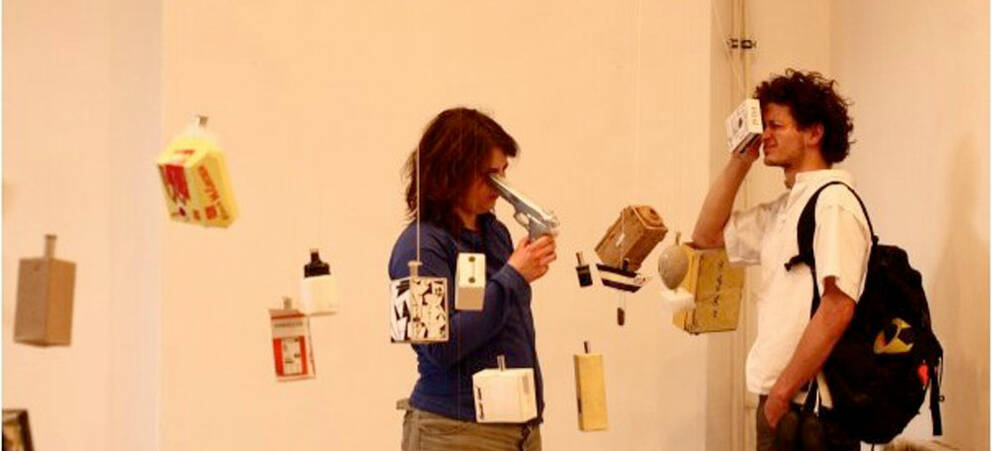
PSR Berlin#3 "Artists Writing About Work" - What special knowledge and criteria can we create?
February 6, 2016 (opening workshop) on-going until June 14, 2016 (closing session) at Uferstudios Berlin and other locations
Participants of the project:
Core working group of artists and editors: Chris Gylee, Richard Aslan, Claudia Basrawi, Louise Trueheart, Giulia Messia, Juli Reinartz
Artists and writers: Kai Simon Stoeger, Federica Fiore, Daniel Hellmann, Jasna L Vinovrski, Anna Nowicka, Felix Marchand, Veronika Bökelmann, Kai Simon Stöger, Nina Fischer, Sarah Calver, Emily Jeffries, Enrico Wey, Ariel Efraim Ashbel, Agathe Chion, Ben Mauk, Daniel Brunet, Richard Hancock, Doireann O'Malley, Janet Leyton-Grant (Translators) and Indre Klimaite (Graphic Designer)
Following the needs of artists raised in Performance Situation Room #2 in June/July 2015 in Berlin, the participants of PSR#2 (Juli Reinartz, Chris Gylee, Richard Aslan) formed an initiative called “International Notice” to evolve a different way of writing about performance work and choreographic practice. In order to increase the visibility of the artworks and to build an archive which gives excess to everyone the following concept (Performance Triangulation Station) for a pilot phase was created:
„During the pilot phase of INTERNATIONAL NOTICE – Performance Triangulation Station, we will generate 18 pieces of original critical writing in response to six performances taking place during March and April 2016 on the Berlin Free Scene. That’s three pieces of text per performance. This is how we will do it:
STEP 1: Performance makers interested in taking part in INTERNATIONAL NOTICE respond to an Open Call.
STEP 2: Eligible performances are entered into a lottery to avoid curatorial bias. Three performances are selected.
STEP 3: Two writers are assigned to each performance. The first is a performance maker in the Berlin Free Scene making work in a similar field to the performance in question. The second is a member of the public with a thematic connection to the work.
STEP 4: The two writers receive press tickets to their performance.
STEP 5: The two writers each write a response of around 500 words according to the criteria, which will be developed for the pilot phase of the project during an open workshop on February 6, 2016. They work with an editor to make sure they are happy with their text, and that the text corresponds to the project criteria.
STEP 6: The performance maker receives the two texts. When everyone is happy, the two texts are translated (either from English into German, or German into English) and are published on the website of International Notice.
STEP 7: The performance maker writes their text, also of about 500 words.
STEP 8. The performance maker’s text is also translated and published on the website, completing the Performance Triangulation process.“
To start off this process a public meeting and workshop took place on February 6 to re-think and re-write what kind of writing and criteria are needed to reflect artist knowledge. In different constellations (individual, group of two, group of four) everybody was busy with defining her/his criteria and in an interesting collective process the results were composed to five “golden rules” everybody agreed with. »
THE FIVE GOLDEN RULES:
1) Be honest, but not rude on a personal level. Avoid excessive diplomacy.
2) Be subjective. Don’t speculate about the intentions of the maker. Write about how the piece resonated with you.
3) It’s not your job to sell the piece to the reader, or to stop them from buying it.
4) You don't have to come to conclusions about whether the work was good or bad, or if it worked or not. You don't have to know and you can ask questions.
5) You don't have to speak for anyone other than yourself.
Additionally the workshop participants wrote provocations and ideas, which could be taken as a source for inspiration in their writing processes:
Thoughts, provocations & ideas:
● Even if you didn’t like the performance, can you still write an interesting piece by stepping into dialogue with it?
● Ask yourself: “Will what I am writing still be interesting this time next year?”
● Ask yourself: "What assumptions am I making?
● Be daring in your writing and take it seriously as an artform. Allow yourself to go beyond descriptions of the work, and don't stay only with what the performance proposes.
● Be curious, be open. What happened to you? What questions did the work provoke in you?
What happened later? In the coming days? Do you have new questions? Did you dream about it?
● Consider adopting a specific temporary position - it’s ok to play devil’s advocate. If you do, be transparent about it in your writing.
● Consider ignoring the existing criteria and creating your own. If you do, be transparent about it in your writing.
● Think about your personal interest, concern and perspective. Can you reflect this in your writing?
● Think about the text as a practice to develop your thoughts
● Think about how you might understand the multiple dimensions of the performance other than imagery.
Following the workshop a two month pilot phase was set up:
March – April 2016
Featuring of 6 performances and 18 texts
May 2016
Workshop at the Kühlhaus in Berlin
Invitation to yourself in writing. An instantaneous writing flash mob.
After an open call, three performances in March and three in April 2016 were selected by lottery and with another open call the writers for the reviews were found. The aim to write from a subjective perspective and present these multiple voices – three on each piece of art – worked out and the results can be found online: www.internationalnotice.org. This online set-up also tries to approach the communal thought behind the project of the INTERNATIONAL NOTICE.
Performance Situation Room #3 ended with a closing session on June 14,2016, where an evaluation of the pilot phase happened and a plan was made how the initiative INTERNATIONAL NOTICE can continue beyond the frame and support of PSR.
06.02.16 - 14.06.16
Berlin (DE)
